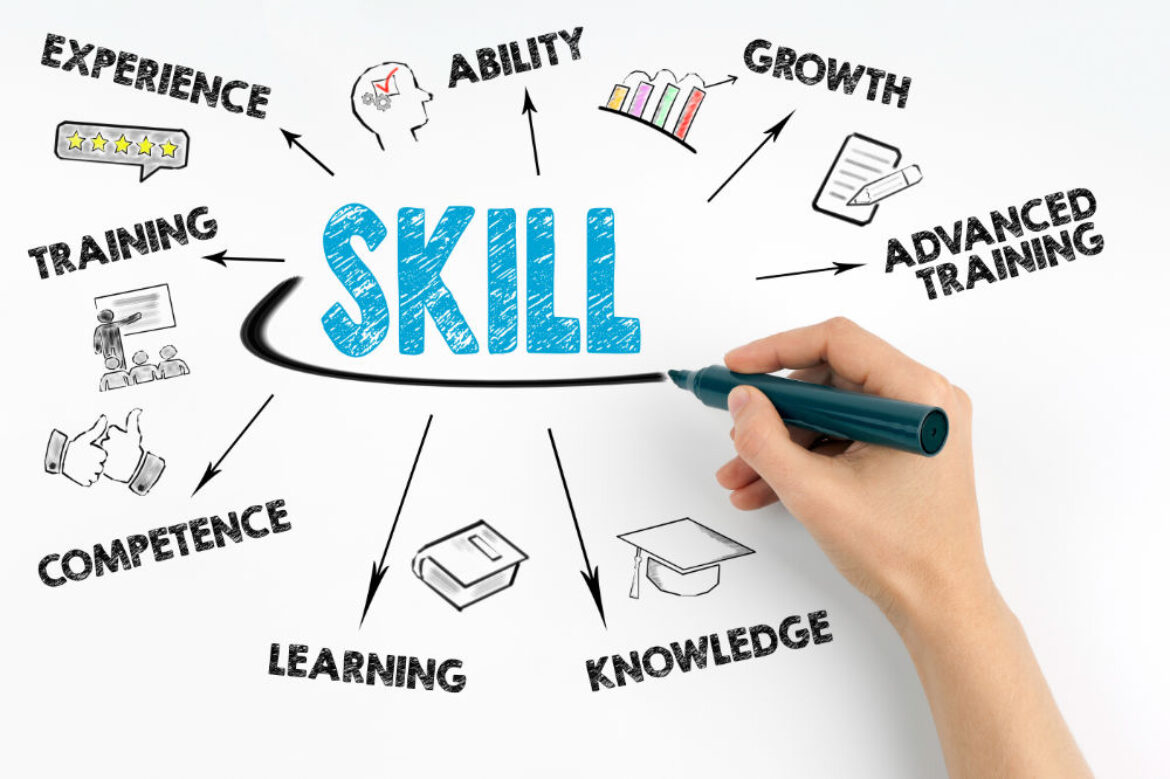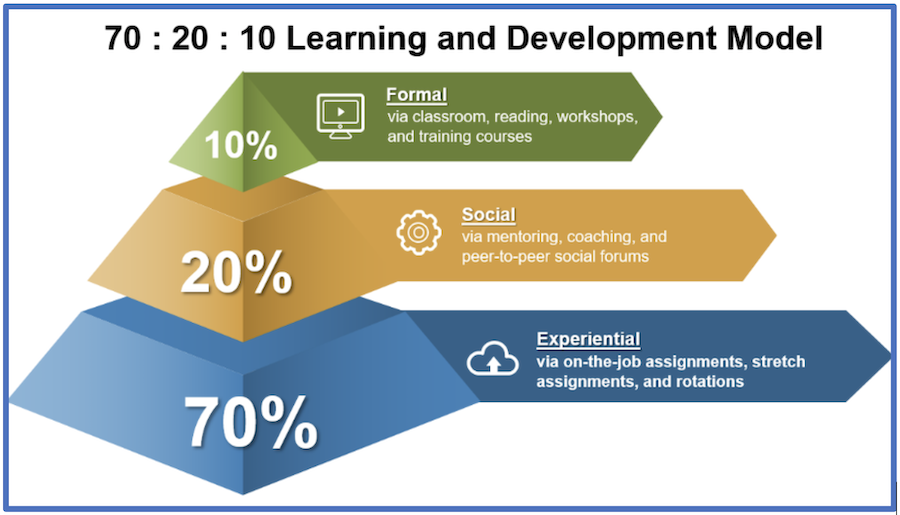
How to Use the 70/20/10 Model to Develop Careers
Did you know there is a tool to develop your skills and competencies that costs little to no money? It’s called the 70/20/10 Adult Learning Model (pronounced – seventy, twenty, ten).
Before we explain how the 70/20/10 model can help you develop career goals, let’s look at three types of learning strategies: pedagogy, andragogy and heutagogy. Pedagogy, known as “teach-centered”, is typically used where the student learns from one direction: teacher to student. Andragogy, known as “student-centered”, is when the student learns from two directions: teacher to student and student to student. Finally, heutagogy, known as “self-directed”, is how students learn from multi-directional perspectives: teacher to student, student to teacher, student to student, inside and outside of the learning environment; with heutagogy, the student sets goals and expectations, based on their experiences. The 70/20/10 model includes all three types of learning strategies.
What is the 70/20/10 model?
Most of us immediately think about the costs of going to back to school to learn new things. The 70/20/10 model shows how you can learn something new, in many cases, without spending a dime. The model says that the best learning uses pedagogy, andragogy and heutagogy, where you spend 10% of your time learning from a teacher, 20% of your time learning through others and 70% of your time learning experientially.

“The 70%” (aka – experiential learning)
So how do you get experiential learning? Find new experiences within your organization. The easiest way is to ask for new projects or tasks at your current job so that you can broaden your understandings and experience. You can also ask for a rotational assignment; these assignments can expand your thought processes about other departments, and help you see the connections between the various departments. In addition, rotations may also lead to a better understanding of the strategic alignment of the company and the responsibilities of the different divisions.
“The 20%” (aka – social learning)
This area is about who you know. When you think about your colleagues, what can you learn from them? From whom can you pick up tricks and tips to improve your skill sets?
Once you identify the who, the next step is to apply the social learning at work. Brown bag lunches are one example, where you learn new theories, research, or processes during a work meal. Social learning can also be joining a group like Toastmasters International to learn how to build new skills, improve current skills and develop competencies for effective communication. You may only spend one or two hours with these groups, yet you’ll learn new ways, techniques, and tips to improve your focus areas.
“The 10%” (aka – formal learning)
Most people think about taking “official” classes or courses to learn something new. While formal courses are important, you should only use this 10% of the time to learn something new.
You may wonder, “Does that mean I can only take classes 10% of the time?” No. It simply means that you have 90% more options than you might know about today. So, the bottom line is: don’t spend all your money on formal classes!
Three Tips to Develop Your Career with the 70/20/10 Model
When you employ the 70/20/10 model, you learn more things from observing, doing, and connecting with other subject matter experts. A perfect example would be that of the Project Management Professional (PMP) certificate, where a training course could cost $5,000 for a week’s course, $500 for the exam and a week of your hard-earned vacation time. However, if you use the 70/20/10 model, you could partner with a PMP certified individual for a period of time, to learn aspects of project management; you could also complete a rotation in your organization’s program management office (70%). Next, you could join a PMP online forum to ask questions and learn from others (20%). Finally, you take a 1-day course (10%). By learning from multiple people in various ways, the learning will be more robust and sustainable.
Here are three specific tips to keep in mind when developing your career:
- Understand that formal courses aren’t the only solution to training; you don’t always have to attend an expensive course to learn something new. Find other solutions before you pull out your wallet.
- Know that the 70/20/10 model is adjustable to your organization. Use your organization’s workforce structure to expand your knowledge, techniques, and skill sets, based on current programs.
- Leverage the “in-house” knowledge of other employees. There is always someone smarter in the room; by working with them and asking questions, you can pick up tips on how to improve your own skills. When you look at the 90% solution first, learning something new can save yourself and the organization money in the long run, while still gaining the knowledge, skills, and competencies you are seeking.
Now that you understand the model and how to use it for stronger career development, start by writing down your short-term goals for developing new or expanding existing skills. Then use the model to support your learning. By tracking your steps and over time, you’ll see progress on your goals!
Be on the lookout for our next post on how managers can use the 70/20/10 model for employee development. In the meantime, contact us if you’d like to learn more about the best ways to invest in your employees.


Leave A Comment